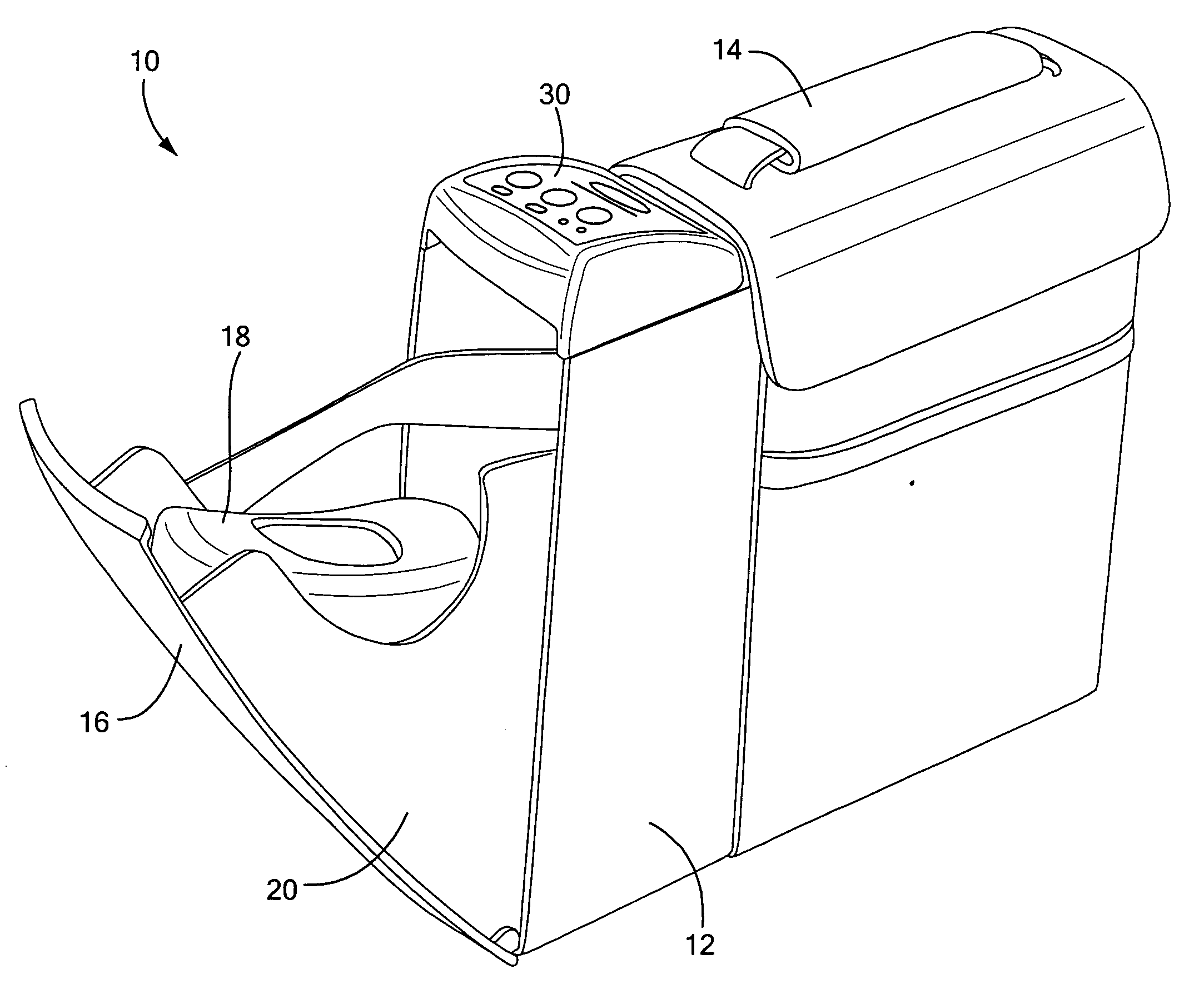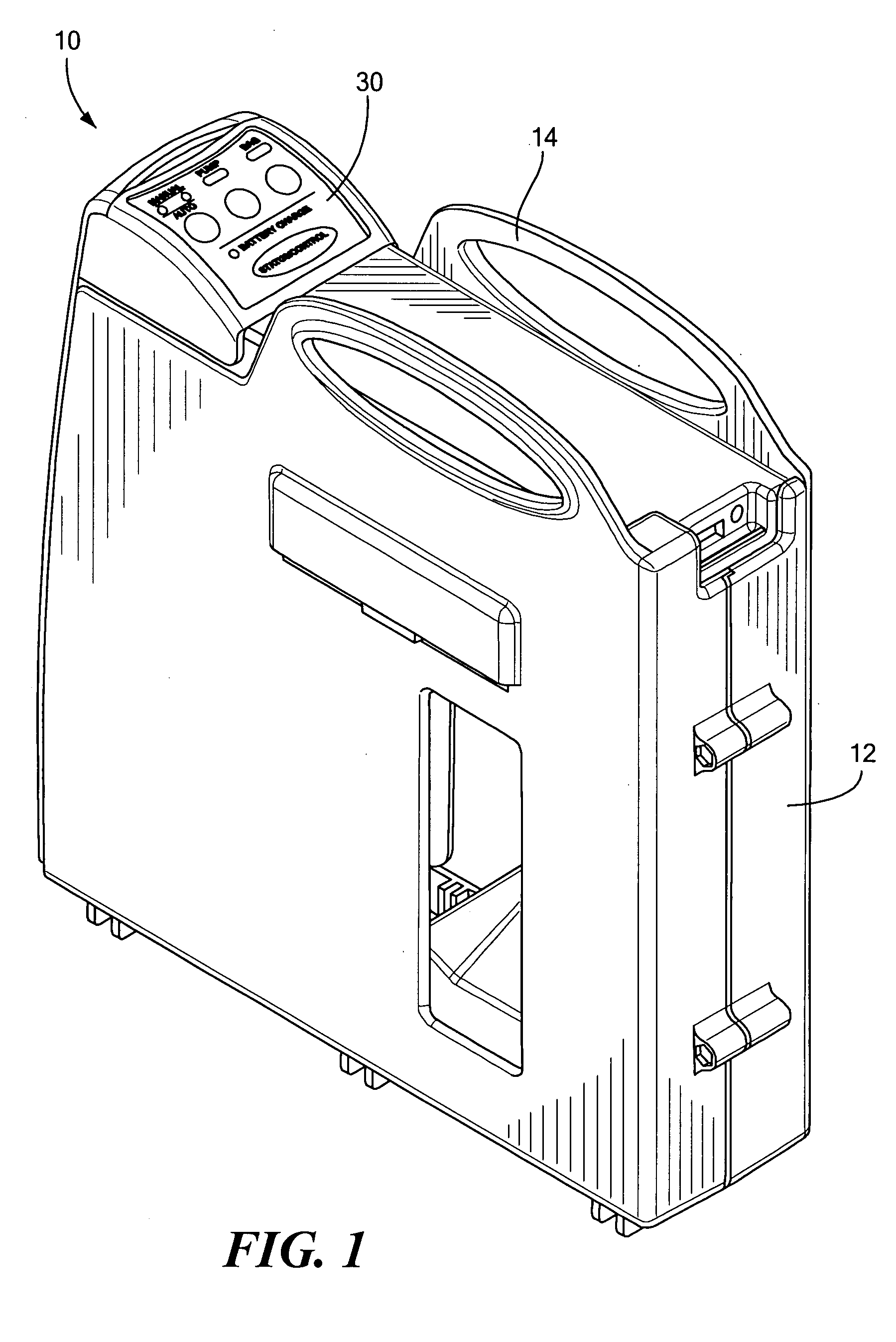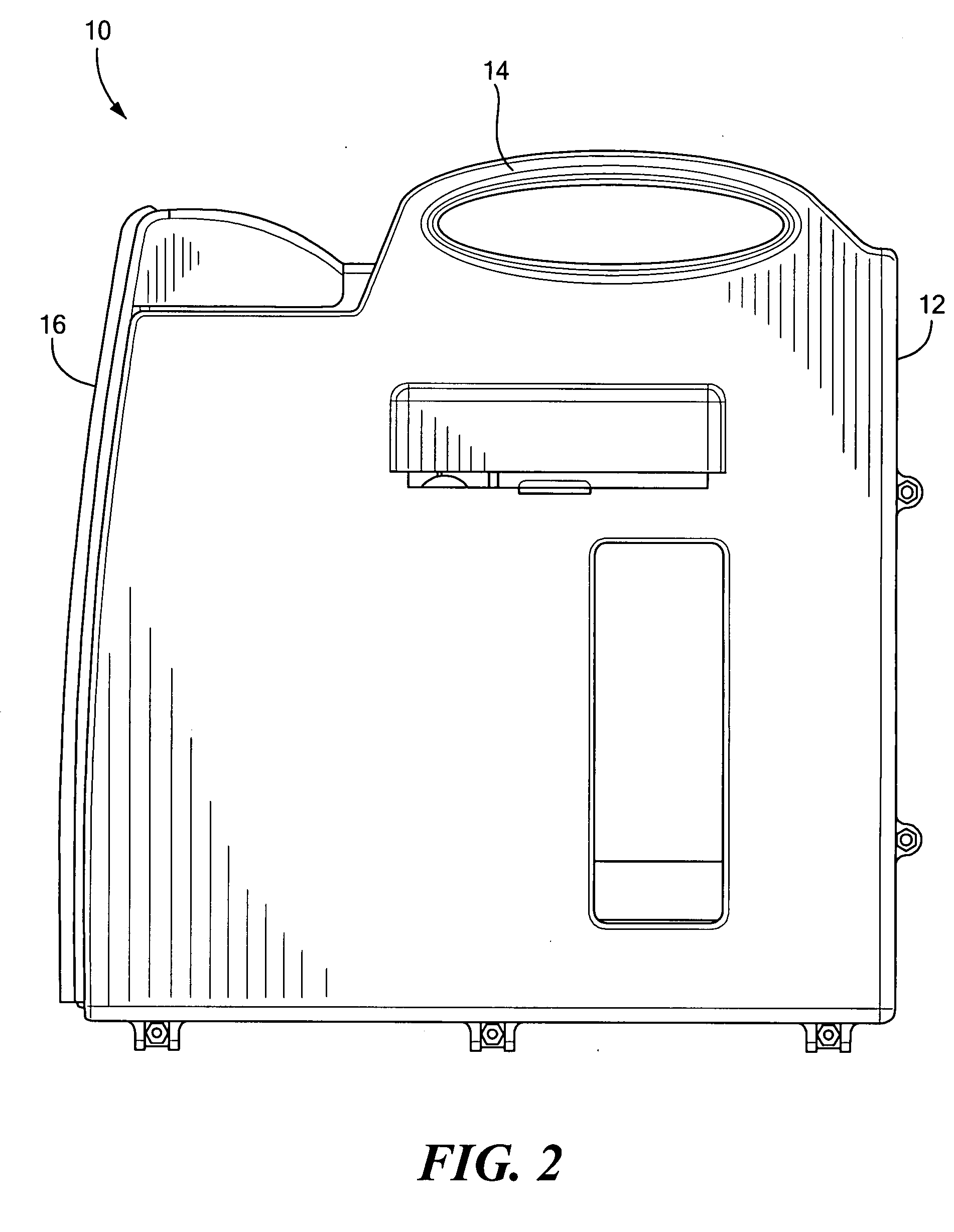Urine collection bag
a urine collection and bag technology, applied in the field of urine collection bags, can solve the problems of affecting the quality of urine collection, and affecting the quality of urine collection, and achieve the effect of accurately determining the volume of urine and being easy to clean
- Summary
- Abstract
- Description
- Claims
- Application Information
AI Technical Summary
Benefits of technology
Problems solved by technology
Method used
Image
Examples
Embodiment Construction
[0050]The present invention provides a urine collection system for collecting urine from users that is discrete, compact, self-contained, quite, portable, includes fail-safe safety measures, is adapted to be operated in different orientations (e.g., inverted, on its side, etc.), is adapted to be operated while in motion (e.g., while being jarred, bumped, etc.), and is adapted to be used without assistance. A urine collection system in accordance with the present invention may be used to collect urine from humans and animals alike. More specifically, the disclosed urine collection system may be used to collect urine from bedridden patients, wheelchair-bound users, users who may have limited mobility, users who have various forms of urinary incontinence, people unable to use conventional toilets, users who are traveling, and others. The present urine collection system may also be used to collect urine from patients in various positions, such as, but not limited to, a seated position, ...
PUM
 Login to View More
Login to View More Abstract
Description
Claims
Application Information
 Login to View More
Login to View More - R&D
- Intellectual Property
- Life Sciences
- Materials
- Tech Scout
- Unparalleled Data Quality
- Higher Quality Content
- 60% Fewer Hallucinations
Browse by: Latest US Patents, China's latest patents, Technical Efficacy Thesaurus, Application Domain, Technology Topic, Popular Technical Reports.
© 2025 PatSnap. All rights reserved.Legal|Privacy policy|Modern Slavery Act Transparency Statement|Sitemap|About US| Contact US: help@patsnap.com



